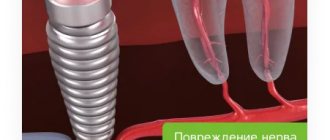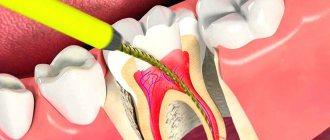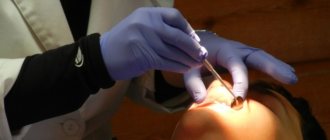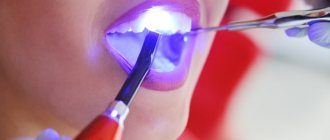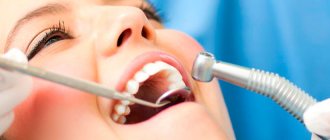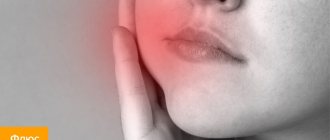It happens that after dental procedures, toothache does not go away. It may become smaller, less pronounced, and sometimes pain occurs only when you press on the tooth. Does this mean that the doctor did not complete the tooth treatment? What do pain sensations indicate immediately after treatment, how to respond to them?
After treatment of a tooth it hurts to press on it
Usually, a visit to the dentist solves the problem completely - the tooth is cured or, which is also sometimes necessary, removed. Almost always, the dentist warns you what sensations may appear soon: whether the tooth or gums will swell, how long they will last, and in what case you need to come back for an appointment.
If a tooth is removed, there may be slight pain at the extraction site throughout the day. This is normal, because the hole after removal is a living wound that needs time for tissue restoration. Roughly speaking, the wound should calm down and heal. But if the pain does not subside for several days, it is strong, throbbing, the swelling does not go away, you need to go to the doctor.
If the pain does not subside after treatment or removal, you should consult a doctor.
Why else can a tooth hurt after visiting a doctor?
There are several other reasons that explain toothache after a visit to the doctor. These are only possible options; you should not make diagnoses on your own. As a rule, the doctor gives a guarantee on the filling, and if pain occurs, he is obliged to see you, and this visit will be free.
Why else can a tooth hurt?
- Partial removal of pulp tissue. May cause re-inflammation.
- The caries has not been completely removed. If the tooth is seriously damaged, a temporary filling may be necessary. If for some reason the doctor underestimated this measure, the toothache may become even worse due to incorrect therapy. The fact is that in a completely closed area the inflammatory process will be more severe than in an open one. And secondary inflammation in an already clean area can no longer lead to caries, but to a more serious process - pulpitis.
Pulpitis
- Allergy. A rare case, but it cannot be ruled out. Increased sensitivity to the filling material can cause inflammation and pain in the tooth area.
- Failure to comply with medical recommendations. For example, the doctor told him to abstain from food for some time (usually no more than two hours), but the patient ignored the recommendations.
Violating medical orders can be dangerous
So, pain in the treated tooth, which can occur periodically at certain points, should go away within 2-3 days. If the pain lasts more than a week or two, you need to go to the doctor and find out what went wrong.
Features of periodontitis treatment
With periodontitis, the inflammatory process often spreads to the entire ligamentous apparatus of the tooth. The disease is often complicated by an abscess, so its treatment is a difficult task. It is aimed at eliminating pain and eliminating the source of inflammation. As a rule, doctors perform the following manipulations:
- remove accumulated exudate,
- thoroughly clean the root canals,
- treat them with medications,
- filled with filling material.
When choosing treatment tactics, the form of the disease, the degree of pathological changes and the clinical picture are taken into account.
How to prevent pain after therapy
There are some simple preventive rules that will prevent possible negative consequences of treatment. The first thing is not to violate the doctor’s recommendations. If it is said that you cannot eat for two hours after taking it, then do not violate the instructions for even a minute.
If the doctor told you not to eat for 2 hours, you need to follow the instructions.
If you smoke, then in the next few days after treatment you should reduce the number of cigarettes you smoke as much as possible. It goes without saying that you should give up sweets.
You will also have to give up sweets for a while
Hot or cold foods should also be prohibited; they act as an irritant to the injured nerve endings of the tooth.
It is better to cool drinks and dishes that are too hot
In the first days, it is worth including more liquid and non-solid food in the menu, which is not necessary to bite into. Also, for the first time after treatment, reduce the load on the treated tooth. Chew them intensively; you definitely shouldn’t bite them.
- It hurts to chew on a tooth
Chicken broth is an excellent dietary dish that will not harm your teeth and gums
Of course, it makes no sense to use untested, questionable pain relief recipes. There is no need to run for a painkiller if the pain appears only occasionally, when biting, and immediately disappears. Of course, after treatment, avoid serious physical activity; it will be stressful for the body.
Possible causes of pain
After treatment of periodontitis, discomfort may persist for 7-14 days. This is due to injury to the tooth tissue. If you follow the recommendations of your doctor, regeneration will accelerate and discomfort will disappear.
If the pain persists for longer, you should consult a specialist. The main reasons for this problem include:
- poor-quality filling – lack or excess of filling material;
- the presence of foreign bodies in the root canals – most often these are elements of dental instruments;
- the emergence of a new focus of inflammation - due to the spread of pathogenic bacteria, tooth tissue can become inflamed again.
These are the most common causes of tooth pain after treatment. A doctor will help determine the provoking factor.
What symptoms after treatment require urgent consultation with a doctor?
How can you understand in the first days after dental treatment whether the pain is physiological or the process is already pathological? There are some signs that indicate that you need to see a doctor without delay.
The following symptoms are considered abnormal after dental treatment:
- the pain in the filled tooth pulsates, it is sharp and sharp, and there is no tendency to decrease it;
- pain radiates to neighboring teeth, ear, temple, neck;
- body temperature rises;
- headaches appeared;
- cheek swollen;
- suppuration in the tooth area;
- inflammation of the gums;
- there is a feeling that the filling is in the way in the mouth.
If you have a headache or fever, you need to see a doctor
Possible pain after dental treatment
| Norm | Pathology |
| It hurts to press, press, or bite on a tooth for 2-3 days (maximum – a week) | Increased body temperature |
| Slight lifting of the gums | Pain radiates to the ear, temple, neck |
| Slight pain after the anesthesia wears off | Headache |
| Increased sensitivity and pain when exposed to cold food and liquid, as well as hot, spicy, sweet, sour | Severe swelling of the gums and/or cheeks |
Even if the required two days have not passed after therapy, during which the pain should go away, do not hesitate to visit the dentist. It is necessary to stop the inflammatory process and treat the tooth. Even if the alarm is false, you need to make sure that everything is in order. In this case, the patient’s increased suspiciousness is even encouraged.
Dental filling is not the most complicated process; it is not a surgical intervention. But often this work can be compared to jewelry. Therefore, unfortunately, some problems cannot be ruled out - the doctor may make a mistake. It is good if the patient is treated in a proven clinic with a good reputation, perhaps with the same doctor.
It is best to have your teeth treated in a good clinic
Happy treatment!
Signs of acute periodontitis
Symptoms of acute periodontitis are always pronounced. Among them:
- Acute aching pain, the intensity of which is constantly increasing;
- Pain increases when trying to eat;
- If treatment for periodontitis was not started on time, attacks of pain will appear more and more often, and the intervals between them will become shorter and shorter;
Against the background of intense pain, a person cannot eat, speak, sleep, and may develop an elevated temperature. In the acute form of periodontitis, significant tumors and swelling often appear in the area of the diseased tooth. The cheek may also swell. This occurs due to the active accumulation of pus in the soft tissues of the oral cavity.
How to get rid of toothache?
If the pain after dental treatment is not pathological, effective traditional methods will help eliminate it. Recipes for the 3 most popular folk remedies will be described below.
It is important to know!
Before using one or another folk remedy to treat toothache, it is recommended to find out if you are allergic to the components that make up it.
Recipe No. 1 Garlic compress
The wrist opposite the side where the causative tooth is located should be rubbed with half a clove of garlic cut in half. After this, another clove needs to be crushed and applied to the surface of the wrist. To avoid burns, before applying garlic pulp, it is recommended to wrap the surface of the skin with gauze folded in half. Next you need to bandage your wrist. The tighter the compress is applied, the more effective its therapeutic effect will be. You need to keep the bandage on for at least an hour.
Recipe No. 2 Herbal decoction
St. John's wort flowers, chamomile, elderberry and strawberry leaves (10 g of each component) must be poured with water (450 ml) and brought to a boil. Boil for 40 minutes. Then strain the broth and rinse your mouth with it. The more often the procedures are performed, the faster the toothache will disappear.
PS
In this article, we deliberately do not touch upon mistakes made by dentists that may cause pain. God forbid that a seed of doubt should be planted in you. It is very important to trust your doctor or better look for another! Any doctor will say that the most difficult patient is the patient who does not believe in his recovery. But if you have doubts about the doctor’s competence, then the best decision is to go to another for a second opinion. Take pictures before and immediately after treatment, and keep these pictures for yourself. This will help prove you are right if something goes wrong. And trust your doctor!
The situation where pain may occur is quite predictable. In such cases, the dentist always warns the patient about possible pain. And if the pain goes away after a week or two, then there is nothing to worry about.
Dental periodontitis: what it is, how to treat it
| Treatment of periodontitis always begins with a doctor analyzing the patient’s complaints and studying the image. Only after this will it be possible to understand whether a tooth will need to be removed due to periodontitis, or whether it can be saved! |
Treatment of periodontitis: stages
- If the disease has reached an acute stage, then the doctor’s first priority is to create an opportunity for the pus to flow out, since otherwise it will not be possible to get rid of the acute pain.
- The crown (if any) is removed, the root canals are unfilled (this must be done on the patient’s first visit).
- If the gums are swollen, the abscess will need to be opened.
Open root canals will allow the pus to drain freely, which will significantly relieve the pain. In addition to this, the dentist will prescribe antibiotics and rinses. A repeat visit is scheduled no earlier than two to three days later. If the pus no longer drains by this point, an antiseptic drug is placed in the canals.
Further methods of treating periodontitis will largely be determined by the size of the inflammatory focus.
Treatment of acute periodontitis of the tooth
The acute stage of the disease is accompanied by severe pain, forcing the patient to consult a doctor as soon as possible.
During the visit, the doctor removes the pulp (the root canals are not closed, since a path is needed for the pus to exit). A crown or filling may need to be removed. If the gums are swollen, the dentist may decide to make an incision to facilitate the release of purulent masses.
In most cases, these measures are enough to make the pain go away. In addition to surgical measures, the patient is prescribed drug therapy in the form of taking oral antibiotics and rinsing with them.
After 4 days, a follow-up visit is scheduled, during which the doctor checks whether all the pus has come out. To achieve final cleaning, an antiseptic is placed into the tooth.
Then, with the help of medications, the inflammatory process is relieved, and the canals are sealed. In some cases, bone tissue restoration and long-term anti-inflammatory therapy may be required. Sometimes a doctor may find it advisable to get rid of a cyst using a laser.
Treatment of chronic periodontitis
Treatment of the fibrotic form involves several visits to the doctor over the course of a week. Since the upper part of the root is not changed, the technique allows you to fill the canals at the next visit to a specialist.
But the treatment process for granulating and granulomatous periodontitis can take a couple of months, especially if there is a complication.
The following procedures are carried out first:
- a picture is taken;
- under anesthesia, carious areas are drilled and access to the canals is provided;
- if the tooth has not been treated, the pulp is removed, if it has been filled, then the canals are unsealed;
- the channels are expanded and treated with an antiseptic solution;
- until the patient’s next visit to the doctor, an antiseptic is placed in the canals (usually Cresophenon is used);
- a temporary filling is placed;
- Anti-inflammatory drugs may be prescribed (but this is not always done).
The next visit is scheduled in three days:
- the previously placed temporary filling and the medicine placed in the canals are removed;
- the channels are thoroughly washed with antiseptics;
- The canals are filled and then a temporary filling is placed again.
On last visit:
- a picture is taken that makes it possible to understand how successful the tooth restoration after periodontitis was;
- The filling material is removed from the canals and treated with an antiseptic;
- the channels are sealed;
- Another picture is taken to determine whether the canals have been sealed to their entire length, otherwise the disease may begin again after some time.
If the size of the cyst exceeds 1.5 cm (cases have been recorded when the formation can grow up to 5 cm), then after filling, root resection and subsequent restoration of the tooth are performed.
Allergy
This complication of pulpitis treatment is easier to differentiate - an allergic reaction is often accompanied by tissue swelling. If it is a consequence of material moving outside the root canal, there may be swelling of the gums around the treated tooth. In some cases, it spreads to other areas - cheek, lip, depending on the specific tooth.
When pressure is applied, the pain becomes stronger, it is difficult to relieve with painkillers, and over time it only intensifies.
Why does periodontitis start?
- As we have already noted, most often periodontitis is a consequence of untreated or poorly treated caries and pulpitis.
There may also be other reasons:
- Mechanical trauma and damage to the pulp, in which inflammation develops over time.
- As a complication of periodontal diseases.
- As a complication of rhinitis, sinusitis, osteomyelitis.
- As a consequence of weakening of the body, vitamin deficiency.
- As a concomitant disease with diabetes mellitus.
- As a result of poor oral hygiene and the presence of tartar in the cervical area.

